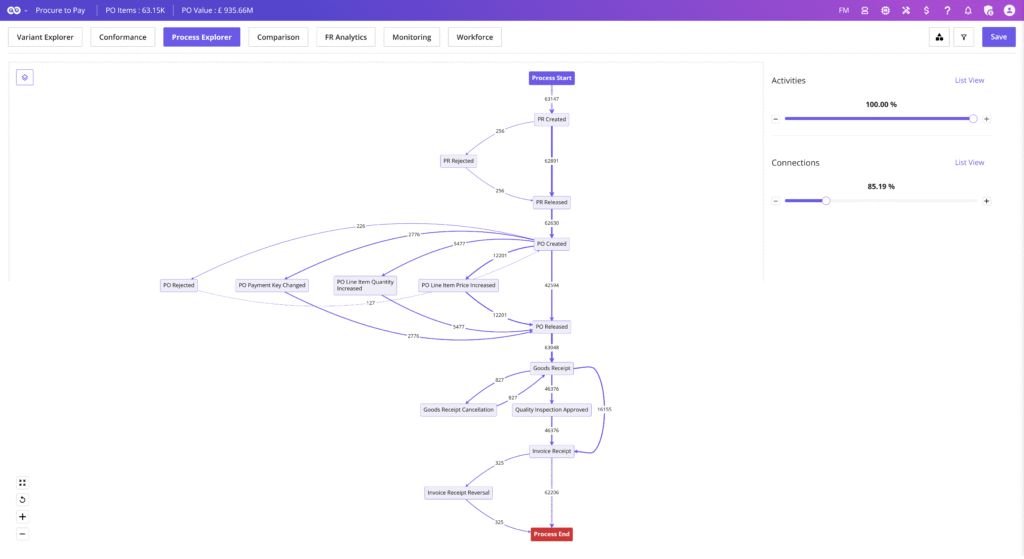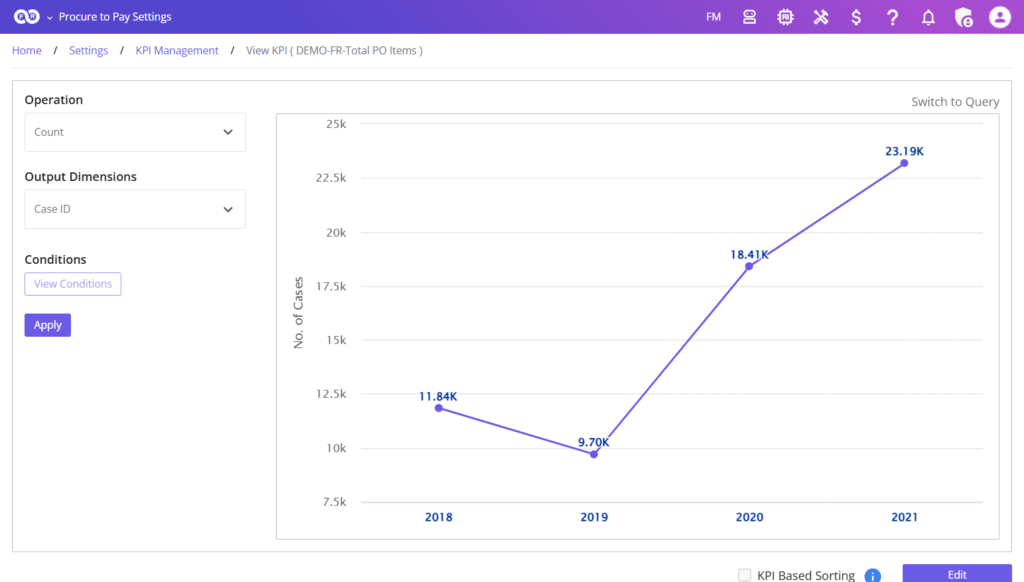Driving Post-Go-Live Process Standardisation
About this Project
- Client: Global enterprise in Renewable Energy
- Industry: Renewable Energy
- Focus Area: Process Standardisation & Simplification post SAP S/4HANA Implementation

The Challenge
Following a major SAP S/4HANA implementation, the client faced a critical challenge. While the system was live, individual business units continued to execute core processes like Procure-to-Pay (P2P) and Accounts Payable (AP) in their own ways.
This created serious questions for leadership:
- How could they ensure all units were adhering to the new, standardized SAP workflows?
- Where did hidden redundancies and non-value-adding steps exist?
- What were the measurable benefits of standardisation?
- How could they prepare for future integration with other portfolio companies?
The risk was a delayed return on investment from the ERP and a lack of process consistency that could hinder future growth. Leadership needed an objective, data-driven way to move from “go-live” to “optimised.”
Why FUTUROOT?
Traditional post-implementation optimisation methods—audits, interviews, and assumption-based analysis—were too slow and subjective. The client needed a fact-based approach to see exactly how their new system was being used.
FUTUROOT delivered a system-agnostic process mining solution that leveraged SAP S/4HANA event logs to:
- Reveal actual execution of core processes across units
- Identify deviations from best practices and surface inefficiencies
- Quantify the business case for standardisation and link it to ROI
- Establish a harmonised baseline for future integrations
Our Approach: Anchored in Data, Not Assumptions
Using FUTUROOT’s advanced toolset, the client gained a transparent understanding of their process landscape:
Process Explorer & Dimensional Analysis
Mapped and visualised all P2P and AP process variations across the company. This exposed how identical processes were executed differently across units—revealing hidden redundancies and opportunities to simplify. 140 Order-to-Cash variants were reduced to 55, a 61% harmonisation.

Conformance Checking
Post-go-live processes were validated against SAP best practices, providing a clear, real-time view of compliance across the organisation. Deviations were flagged, highlighting where business units were straying from the designed standards. This allowed leadership to take targeted actions, resulting in conformance improving from 68% to 92% across AP and O2C processes.

KPI Management
Monitored cycle times, automation rates, and error rates in real time, creating a living dashboard of process performance. Invoice processing cycle times fell by 30% (from 10 days to 7 days). AP exception rates dropped from 24% to 11%. Variance in procurement cycle times across entities was reduced by 45%.

Business Case Management
Compiled all findings into a practical roadmap, quantifying harmonisation benefits—cost savings, efficiency gains, and governance improvements—so leadership could prioritise and fund initiatives. Finance process costs were reduced by 15%, saving £750K annually, and the integration readiness score improved from 64 to 88.

Business Outcomes Delivered
With FUTUROOT, the client turned its post-go-live phase into a source of measurable business value:

Reduction in Process Variants
Process variations were harmonized, achieving 92% conformance to SAP standards.

Faster Invoice Cycles
Invoice processing times improved, and AP exceptions dropped by 13%.

Operational Cost Savings
Standardization and automation delivered £750K in annual savings.

Variance Reduction Across Units
Cross-unit performance improved, ensuring more consistent operations.

Integration Readiness Score
Readiness for future portfolio integrations strengthened, reducing risk and accelerating scale.
“FUTUROOT gave us the objective data we needed to truly unlock the value of our SAP investment. It’s no longer about whether we are live, but how we are optimized.”
Leadership Team Feedback
